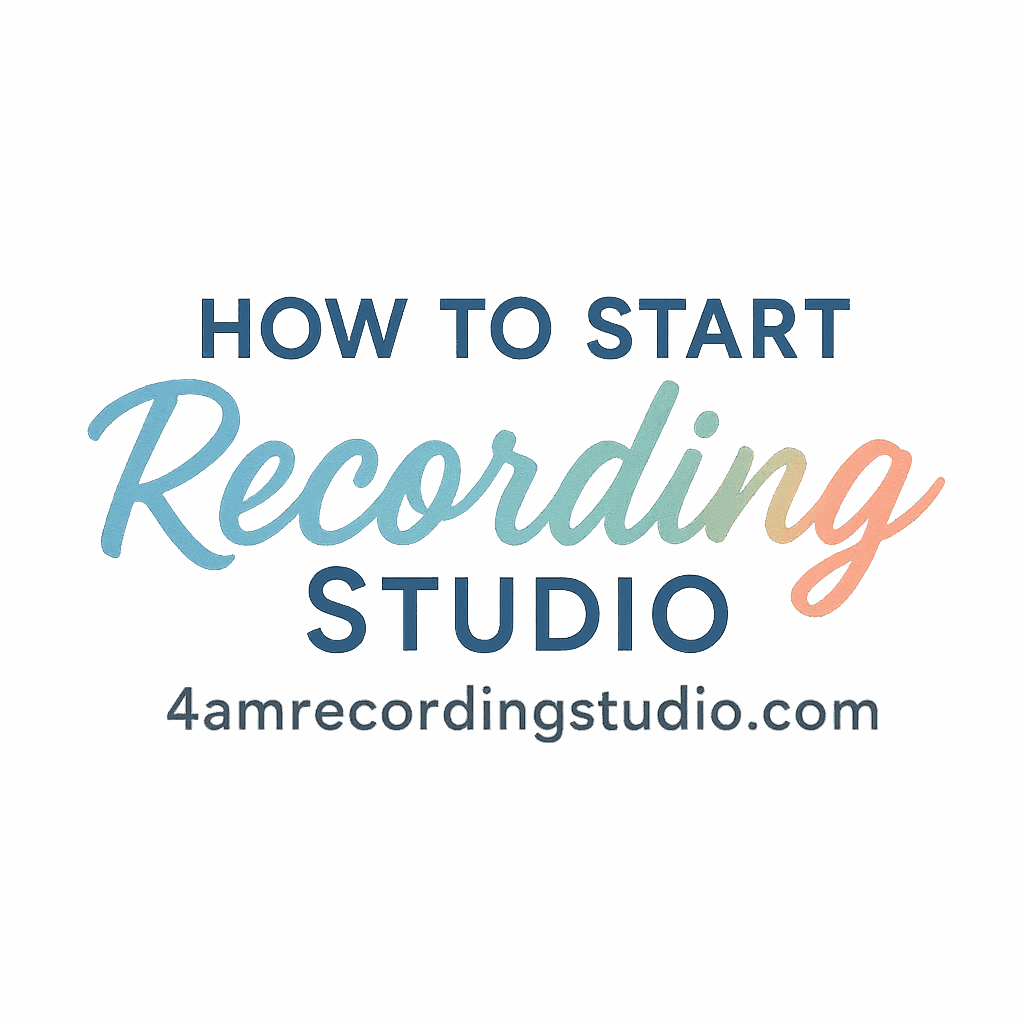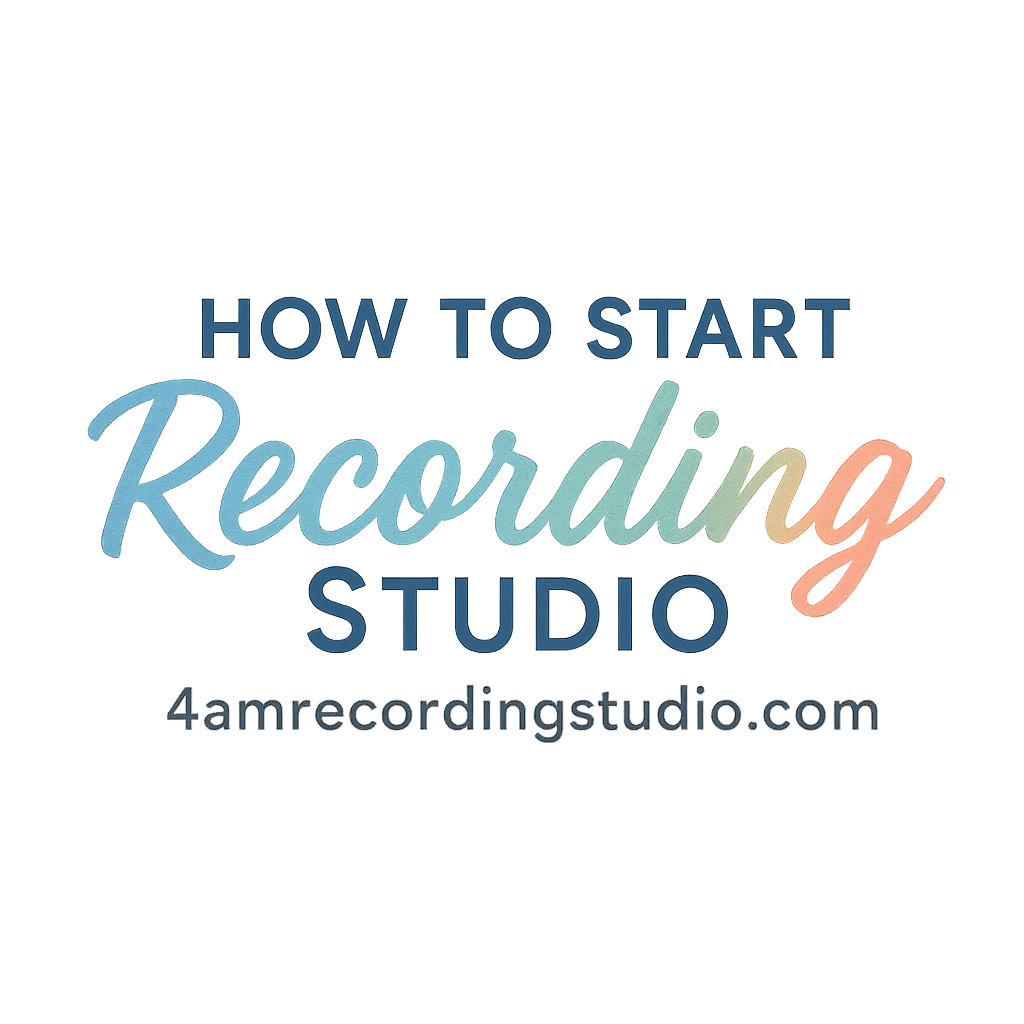Running a recording studio isn’t just about hitting the right notes—it’s about tuning into the numbers that matter. If you’re not tracking the right metrics, you’re basically mixing in the dark. Let’s dig into the 7 key metrics to track for your recording studio’s growth so you can go from surviving to thriving in the music business.
Why Tracking Metrics Matters in a Recording Studio
Metrics are like your studio monitors—they tell you what’s really going on behind the scenes. You might have killer soundproofing, premium gear, and a stylish control room, but none of that matters if your business isn’t growing.
Tracking metrics helps you:
- Make smart business decisions.
- Identify growth opportunities.
- Avoid unnecessary expenses.
- Build better relationships with clients.
Ready to level up? Let’s look at the top performance indicators every studio owner should be measuring.
1. Client Retention Rate
What Is Client Retention Rate?
Client retention rate tells you how many of your clients keep coming back. In the music world, that means bands, solo artists, podcasters, and voiceover artists returning for more sessions.
How to Track Client Retention
Take your total number of returning clients over a certain time period (say, 3–6 months) and divide that by your total number of clients during that period. Multiply by 100 to get the percentage.
Formula:
Retention Rate = (Returning Clients / Total Clients) x 100
Why It Matters
Retention is pure gold. It’s way cheaper to keep a client than find a new one. High retention = client satisfaction = long-term income. If you’re noticing a dip, it’s time to revisit your studio experience, setup, or pricing strategy.
2. Monthly Studio Bookings
Measuring Booking Frequency
How busy is your calendar looking each month? Your monthly studio bookings reflect how often your services are in demand.
Track:
- Number of sessions booked
- Types of sessions (e.g., music, voiceover, mixing, mastering)
- Cancellations or no-shows
Tools to Track Bookings
Use platforms like Calendly, Acuity Scheduling, or even Google Calendar with custom trackers. For more advanced scheduling insights, you can explore studio-specific CRM tools.
Want more on scheduling tools? Dive into this scheduling guide for busy studio owners.
Boosting This Metric
Promote seasonal offers, bundle packages, or upsell services to maximize your monthly sessions. Check out 9 ways to upsell services in your studio for ideas.
3. Revenue Per Session
How to Calculate It
Total revenue divided by the number of sessions = revenue per session. This gives a clear idea of how much money each session is actually bringing in.
Formula:
Revenue per Session = Total Monthly Revenue / Total Monthly Sessions
Signs of Growth
If your session revenue is increasing, it means you’re either:
- Charging more per hour (yay!),
- Booking longer sessions,
- Upselling services like mixing or mastering,
- Or working with higher-end clients.
Want to improve your pricing strategy? Check out studio business planning tips.

4. Equipment ROI (Return on Investment)
Calculating ROI for Music Gear
You love your gear—but is it paying off?
Track how much each piece of equipment costs you versus how much income it helps you generate. That pricey MIDI controller might be cool, but if it’s not bringing ROI, it might not be worth the investment.
Learn more about must-have recording studio equipment and tools and their real value.
ROI vs. Quality of Service
Sometimes the ROI isn’t just financial—it’s in client satisfaction and workflow efficiency. That new audio interface might save you hours of mixing time.
Also, track usage: Is your studio controller or that high-end microphone collecting dust?
5. Online Engagement Metrics
Social Media Stats That Matter
This one’s for the marketers out there. Your studio’s growth also depends on how well you’re engaging with your audience online.
Track:
- Follower growth
- Post reach and engagement
- Click-through rates to your booking page
Explore marketing and branding strategies that actually drive conversions.
Newsletter Open Rates
If you’re not emailing your clients, you’re leaving money on the table.
Your newsletter open rate tells you if your emails are hitting or getting skipped. Check out these email marketing ideas to step up your game.
Tracking Engagement Over Time
Use platforms like Google Analytics, Mailchimp, or Buffer to gather monthly reports. Look for patterns, dips, and peaks, and adjust your content accordingly.
6. Collaboration Frequency
Why Collaborations Drive Growth
Whether it’s working with local artists, producers, or influencers, collaboration frequency is a great way to measure how well you’re networking and expanding your reach.
How to Measure Collaboration Efforts
Track:
- Number of outside producers using your space
- Artist features on projects recorded at your studio
- Joint marketing campaigns or giveaways
More collaborations often mean more bookings. Consider forming studio partnerships that boost business.
7. Studio Website Analytics
Traffic Sources
Are people finding your site via Google, social media, or direct referrals? Knowing your traffic sources helps you double down on what’s working.
Use Google Analytics to break it all down.
Bounce Rate and Session Duration
High bounce rate? Visitors may not like what they see. Low session duration? Your content may not be engaging enough.
Make sure your site is optimized for SEO and content-rich. Start with these SEO tips for recording studios.
Linking SEO to Growth
SEO isn’t just buzzwords—it’s a growth engine. Make use of key tags like how to start, music business, and beginner to target your ideal audience.
Using Your Metrics for Strategic Growth
Setting Goals Based on Data
Now that you’re tracking all the right things, it’s time to set goals. Want to increase bookings by 20%? Retain 90% of clients? Get 50 new newsletter signups? Let your data guide you.
Continuous Improvement and Tweaking
Growth isn’t a straight line. Keep adjusting your:
- Pricing
- Services
- Gear
- Marketing strategies
Leverage insights from studio setup basics and management and growth tips to keep pushing forward.
Conclusion
Tracking your studio’s growth metrics is like mixing a hit record—you need to balance the right elements. Whether it’s client retention or online engagement, every metric plays a part in your success. Don’t just run your studio—grow it intentionally.
Make sure you revisit these numbers monthly, tweak your strategy, and don’t be afraid to experiment. Your growth depends on your ability to measure what matters.
FAQs
1. What’s the most important metric for a recording studio to track?
Client retention rate is key—it directly reflects client satisfaction and long-term income.
2. How often should I review these metrics?
At least once a month. A quarterly deep dive is also a smart move.
3. Do I need expensive tools to track these metrics?
Nope! You can use free tools like Google Analytics, spreadsheets, and basic CRM platforms to get started.
4. How can I improve my online engagement metrics?
Post consistently, use targeted hashtags, engage with your audience, and promote content through email newsletters.
5. Is revenue per session a better indicator than total income?
Yes—because it shows the actual value of each session and helps assess pricing and service quality.
6. What’s a good client retention rate for studios?
Anything above 70% is great. If you’re at 85% or higher, you’re crushing it.
7. Can collaborations really grow my studio?
Absolutely. Collaborations bring in new audiences, fresh energy, and creative opportunities that often translate to more bookings.


